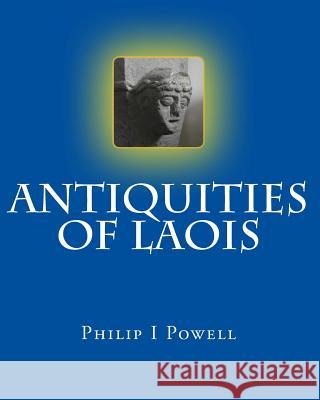Antiquities of Laois » książka
Antiquities of Laois
ISBN-13: 9781495418440 / Angielski / Miękka / 2014 / 282 str.
County Laois is one of the richest counties in Ireland for antiquities and has been bestowed with a rich tapestry of history that spans over four millennia. Laois began as being part of the Kingdom of Osraighe, to the Lordship of Leix, and from the creation of Queen's County, to finally returning to its ancient name of County Laois after the creation of the Irish Free State in 1922. The earliest and only written records of pre-Christian County Laois come from the Greek historian, Ptolemy, whose map of Ireland of c.100 A.D., shows a castle or fortress at Dunamase, close to a river called the Birgus and inhabited by a Celtic tribe called the Brigantes. They claimed descent from Lug Laighseach, prince to the Royal Fort of Emain Macha & hero of the Red-Branch Knights of Ulster. From the megalithic structures of the Bronze Age; the Iron Age sites of the Dun of Clopook & Dun Masc & the early monasteries & elaborate Round Towers of Christendom, the inhabitants of this land flourished for over a 1,000 years under the protection of the most powerful Gaelic chieftains in the region; the Mac Gilla Patraics & the O Mordha. They arrival of the Anglo-Normans, with their imposing masonry castles & the architectural wonderments of their religious abbeys, saw great changes in Laois, not least in cultural and religious orders. Its history has been woven together by these many diverse facets of the past, from the powerful Mac Gilla Patraics, Kings of Osraighe; the spread of Christianity by St. Canice, St. Colman & St. Fintan; the plundering & destruction wrought by the Vikings and the Anglo-Norman invasion, placed Laois to the fore of conflict for many centuries; all of which, left indelible imprints on the historical & social landscape of the county. In this guide to the Antiquities of County Laois, I have selected representative antiquities of these various periods, from the early Bronze Age (2,000 B.C.), right through the millennia, and ending around the early-1700s, with some notable structures that post-date this, that deserve a very special mention. Some of the antiquities of the county have been omitted, but this is purely on the grounds of either access and/or simply lack of remains."
Zawartość książki może nie spełniać oczekiwań – reklamacje nie obejmują treści, która mogła nie być redakcyjnie ani merytorycznie opracowana.











